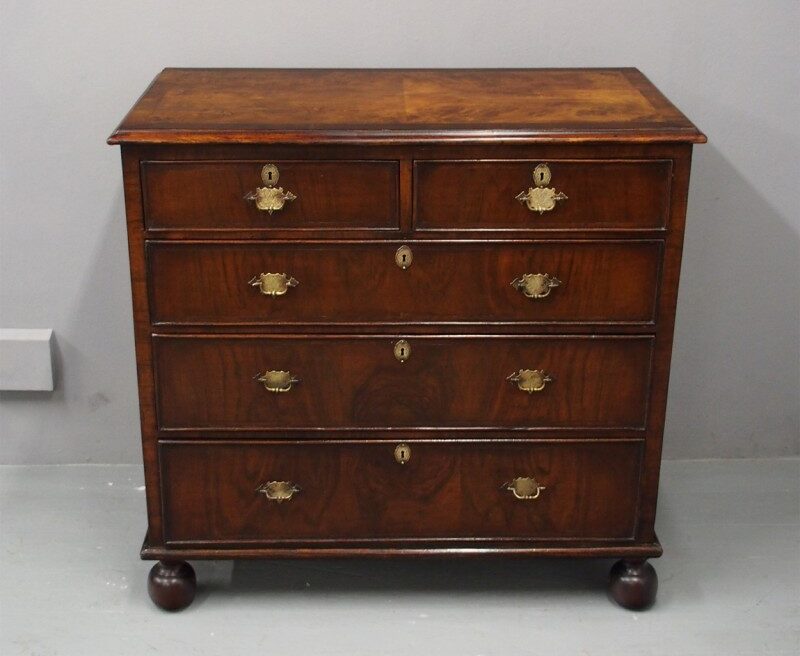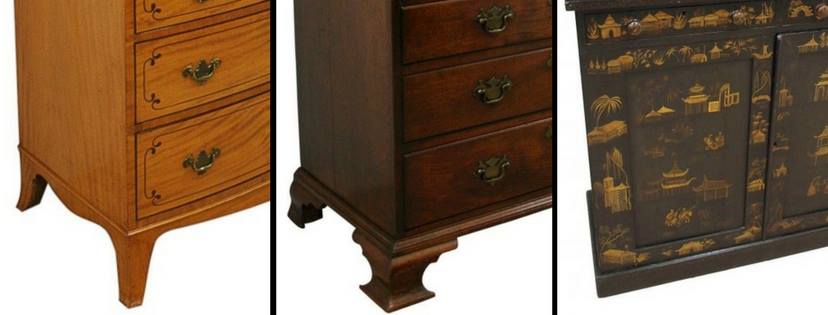Though they are found in nearly every bedroom today, the history of chests of drawers began only a few hundred years ago. Whilst the coffer chest was in use from the 13th century onwards, it was not until the late 17th century that the use of drawers in chests emerged. This coincided with an increasing demand from the wealthiest patrons for luxury furniture and cabinet pieces, and also in an increasing number of cabinet-makers in employment.
These opulent cabinets later started filtering down to upper class and some middle-class homes. Adam Bowett’s English Furniture 1660-1714… notes that these cabinet designs likely influenced the chests of drawers found in ‘middling’ homes from the 1670s onwards, as cabinet-makers applied developing techniques.
Most of the antiques we mention in this newsletter were first commissioned by, or found in the homes of the nobility or wealthiest patrons – but the chest of drawers is an unusual case!
It was likely originally made for a middle-class home, as its smaller size and design meant it was suited to a more modest space. They were still expensive pieces to produce though, as exotic veneers and imported woods, decorative work (including crossbanding and marquetry) and hardware were used to add individual style and flair.
“Indeed, no other article of furniture better illustrates the revolution of design and form brought about by the advent of modern cabinet-making”
English Furniture 1660-1714: From Charles II to Queen Anne, Adam Bowett
You can also date a chest of drawers reasonably easily, firstly by checking the drawers and their handles. For example, an early 18th century chest often has oak-lined drawers with the grain running from back to front, whilst later chests had the grain of the drawer liners (possibly ash, pine or mahogany) running in a side to side direction.
The style of foot or base on a chest of drawers is also a good indication of the period. Whilst bun feet were common through the late 17th century, they were then replaced by bracket feet in the Georgian period and by enclosed plinths in Victorian times.
Other variations to antique chests include: curved (bow-fronted) and serpentine shaped chests of drawers (which gained popularity in the mid 18th century), dressing chests, Dutch bombe chests, military chests, and chests fitted with secretaire drawers.
We hope this history of the chests of drawers was both interesting and useful. Explore our wide wide and ever changing selection of chests of drawers.



